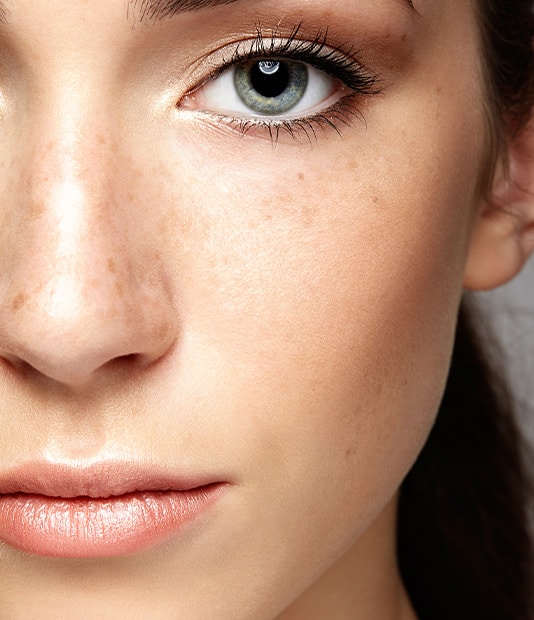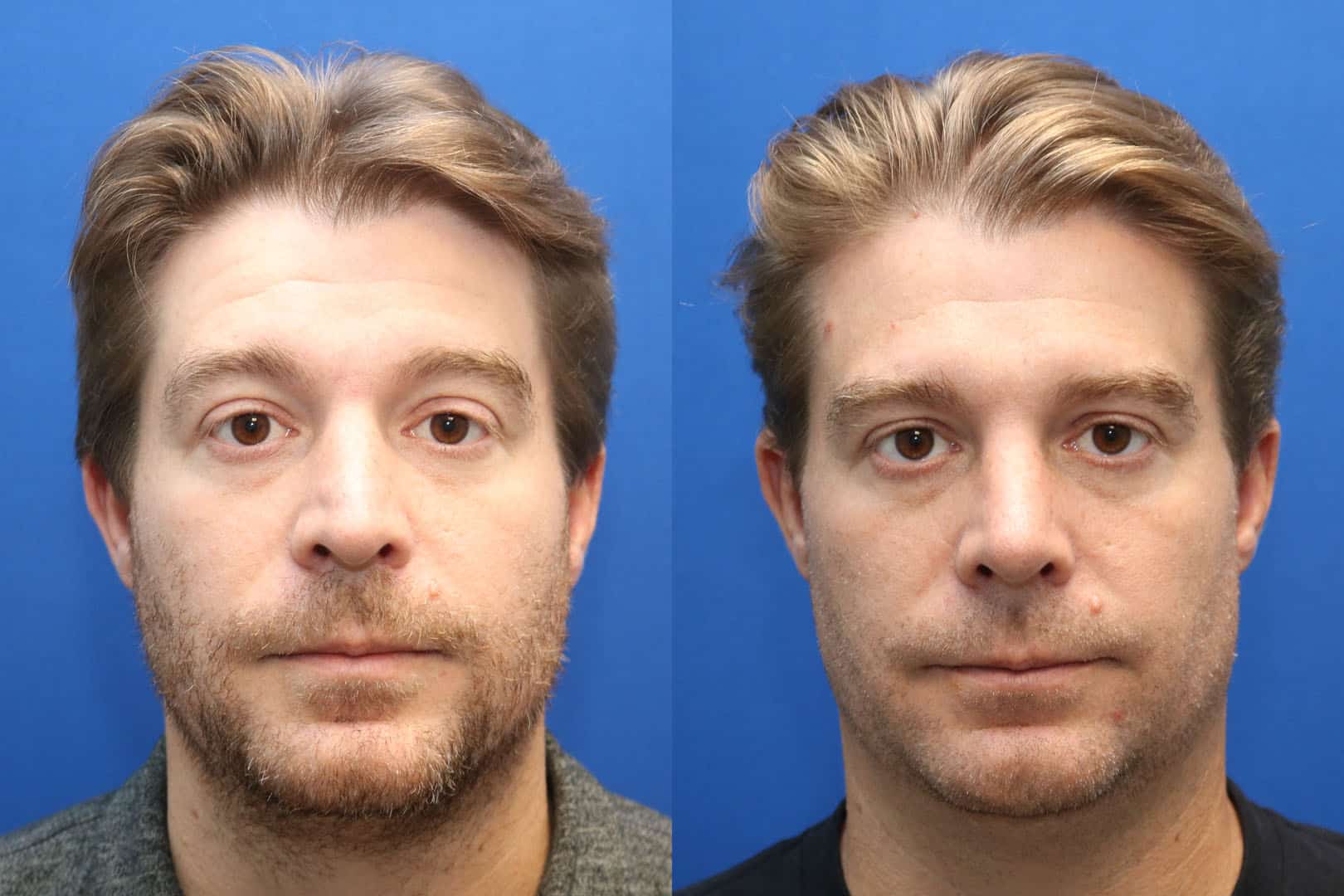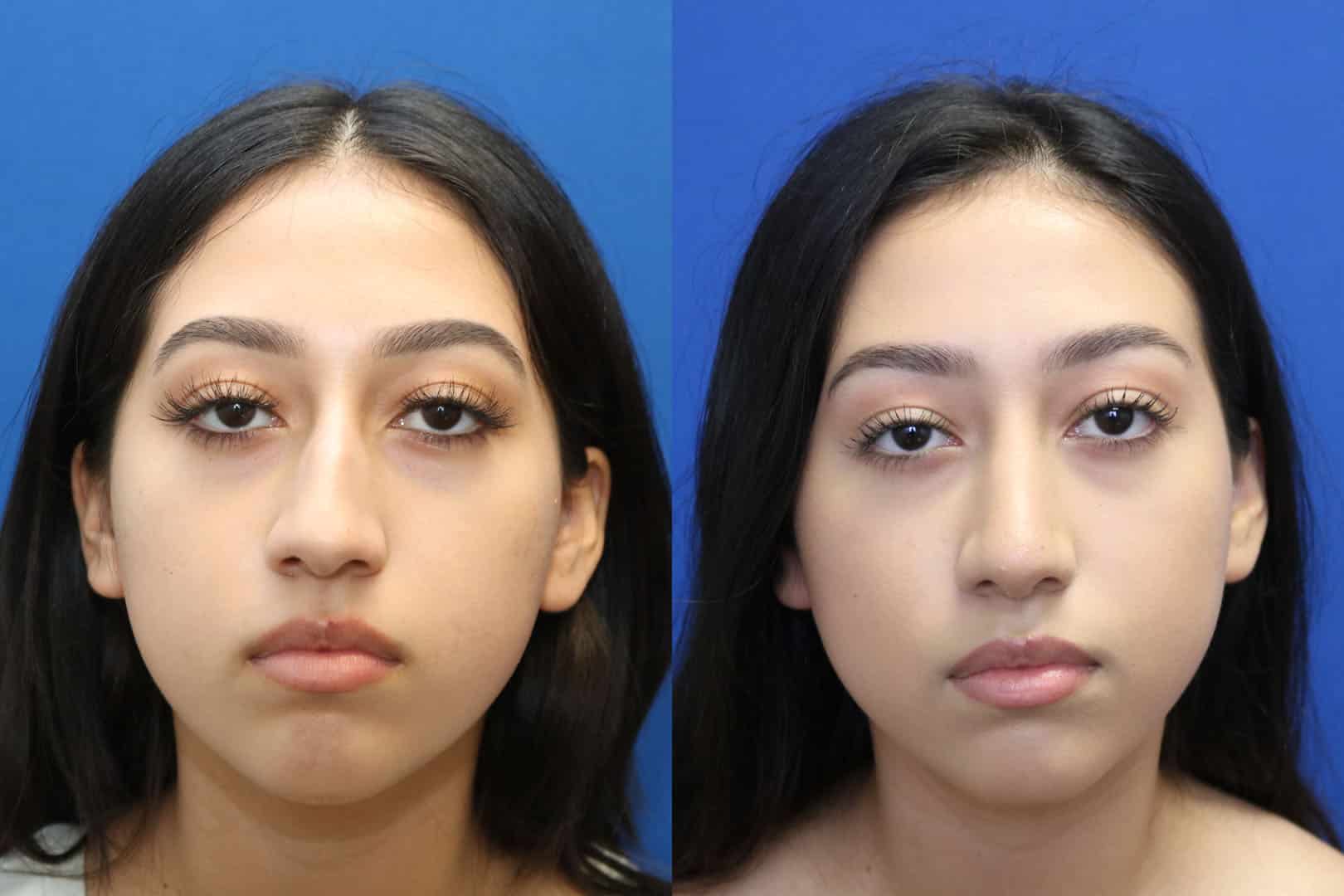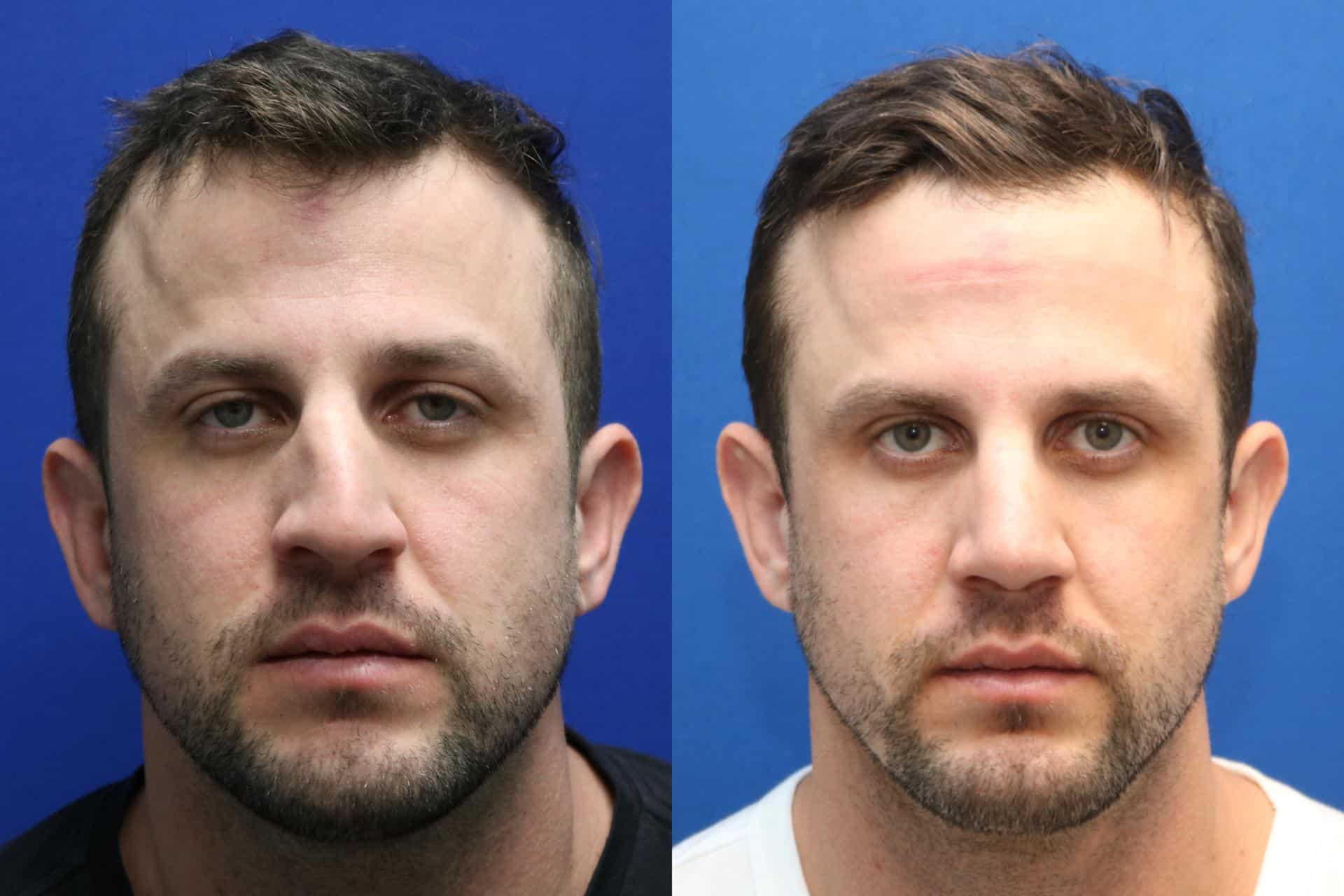Rhinoplasty is among the most highly requested plastic surgery procedures. The anatomy of the nose is complex and delicate, making it important to choose the best rhinoplasty surgeon. Dr. Christian Paquet, known for both his specialized focus on rhinoplasty and high patient satisfaction scores, offers rhinoplasty procedures for patients in the Phoenix, Scottsdale, and Tempe communities.

An Introduction to Nose Surgery
Rhinoplasty, also known as a nose job or nose surgery, is a surgical procedure that aims to improve the shape, size, and functionality of the nose. This cosmetic surgery can be performed to address various concerns, including a deviated septum, breathing problems, and aesthetic issues such as a crooked nose or nasal asymmetry. With the help of a qualified plastic surgeon like Dr. Paquet, patients can undergo nose surgery to achieve a more balanced and harmonious facial appearance. Rhinoplasty is a popular procedure in facial plastic surgery, and its success depends on the surgeon’s expertise and the patient’s individual needs and expectations.
What is a Rhinoplasty?
A rhinoplasty is a surgery that changes the shape and structure of the nose, either for the purpose of improving the appearance, improving respiration, or both. Cosmetic nose surgery, especially in the context of ethnic rhinoplasty, emphasizes the importance of tailoring surgical techniques to accommodate the unique physical characteristics of different ethnic groups. There are generally two primary reasons behind choosing a rhinoplasty: cosmetic and functional.
Cosmetic Rhinoplasty
Generally, patients choose a cosmetic rhinoplasty if they are unhappy with the overall appearance of their nose shape, size, or profile. Many patients consider a cosmetic rhinoplasty as an aesthetic surgery for a while, sometimes even years, before deciding on having the surgery itself. Achieving facial harmony requires a careful analysis of the patient’s overall facial structure to ensure the surgical plan enhances natural beauty. Picking the right plastic surgeon to achieve that facial harmony is an essential part of planning for nose surgery.
Functional Rhinoplasty
If you have breathing problems caused by a structural issue, a functional rhinoplasty may be the right choice. The nasal septum, or the wall that divides the nose into two nasal cavities, plays a significant role in correcting common breathing problems and issues, such as a deviated septum. Common reasons behind a functional surgery can be a sinusitis, nasal deformity, narrow nostrils, chronic congestion, snoring, headaches, a deviated nasal septum, and more. If you ever had a broken nose, you may benefit from a functional rhinoplasty. As a board-certified plastic surgeon and facial surgeon, Dr. Paquet’s unique experience with otolaryngological surgeries and their needs makes him uniquely qualified in providing functional relief with functional nose surgery.
Am I a Candidate for Rhinoplasty?
Most people who are unhappy with the shape or size of their nose or who have difficulty breathing due to issues such as a deviated septum are good candidates for a rhinoplasty. Typically, patients must be at least 16 years old before pursuing a rhinoplasty to ensure that their facial structure and anatomy has completely developed. Patients should also be generally healthy overall and should be nonsmokers.
It is important to review the patient’s medical history to determine the suitability and cost of the rhinoplasty procedure. During a consultation, Dr. Paquet will review your health history and examine your nose to determine whether a rhinoplasty is a suitable and safe option for you. You should be prepared to share any health conditions or medications, supplements, or vitamins that you currently take while in your consultation. Those who have suffered facial trauma or who have had previous rhinoplasties may require a more complex surgery, which is referred to as a revision rhinoplasty. Dr. Paquet can review these options with you during a consultation in his Phoenix office.
Choosing a Surgeon
Selecting the right surgeon for your rhinoplasty procedure is crucial for achieving optimal results. A qualified plastic surgeon with extensive experience in rhinoplasty surgeries can help you navigate the process and ensure a safe and successful outcome. When choosing a facial plastic surgeon, consider factors such as their board certification, experience with similar cases, and reputation in the field of facial plastic surgery. It’s also essential to discuss your goals and expectations with your surgeon during the initial consultation to ensure you’re on the same page. A good rhinoplasty surgeon will take the time to explain the procedure, address any concerns, and provide personalized guidance throughout the process. Be comfortable asking your plastic surgeon questions about their qualifications and what they would suggest to optimize your facial harmony.
Dr. Paquet has performed rhinoplasty procedures for over a decade, and brings with him a wealth of knowledge and expertise to create facial balance for all of his rhinoplasty patients, regardless of whether they’re seeking an aesthetic surgery or a functional one.
Types of Rhinoplasty
The two primary types of rhinoplasty are referred to as an open rhinoplasty or closed rhinoplasty.
Closed rhinoplasty involves all the incisions and changes being made inside the nostrils. This type of surgery has no visible scarring as the procedure is performed entirely on the inside of the nose. A closed rhinoplasty is best for smaller adjustments, such as contouring the tip, shortening or narrowing the nose, or improving nasal asymmetry.
Open rhinoplasty involves a tiny incision made in the skin between the nostrils, and the skin is then pulled back to reveal the underlying structure. There is generally a small visible scar as a result of this surgery. It would be best to choose this surgical option for complex nose reshaping or revisions.
It is also important to customize surgical techniques for ethnic rhinoplasty to preserve unique ethnic features and avoid complications or the need for additional surgeries.
Ethnic Considerations
Ethnic rhinoplasty is a specialized area of nasal surgery that requires a deep understanding of the unique characteristics and concerns of different ethnic groups. A skilled rhinoplasty surgeon will consider the patient’s ethnic background and facial features when developing a personalized surgical plan. For example, patients of African or Asian descent may require specialized techniques to address the nasal shape and structure typical of their ethnic group. By taking these factors into account, a qualified surgeon can create a natural-looking and harmonious result that respects the patient’s ethnic identity. Whether you’re seeking cosmetic rhinoplasty or functional rhinoplasty, it’s essential to choose a surgeon with experience in ethnic rhinoplasty to ensure the best possible outcome.
Before Your Rhinoplasty Procedure
Before your rhinoplasty, you’ll want to be sure to quit smoking (if you are a smoker), and avoid alcohol and blood thinner medication for several weeks prior to your surgery. You will need to arrange for a friend or family member to drive you to and from surgery and may want to ask them to stay for a day or two after your surgery if they do not already live with you in case you need assistance. Be sure to come to your appointment with a clean face. You’ll also want to pick up any prescriptions beforehand and meal prep to prepare for the recovery process. Rhinoplasty is typically an outpatient procedure, so it is important to arrange for someone to accompany you home post-surgery.
The Rhinoplasty Procedure
The nasal passages and nasal airway play a vital role in breathing, and issues like nasal obstruction often require attention to both function and aesthetics. Adjustments to the nasal tip and underlying bone and cartilage can improve airflow and appearance, while some patients may need further surgery depending on the complexity of their case. We will address your internal and external nasal anatomy, and in certain situations, grafting with rib cartilage may be used to achieve long-lasting results.
Most rhinoplasties are performed under general anesthesia, though IV sedation may also be available and can be discussed during your consultation with your plastic surgeon. During the procedure, the lower lateral cartilage is exposed and modified to achieve the desired aesthetic and functional outcomes. Open and closed rhinoplasties differ in a lot of ways, including incision type and location, scarring, suitability, cost, and overall aesthetic goals.
Open Rhinoplasty
In an open rhinoplasty, incisions are made across the columella, which is the tissue that separates the nostrils. This is typically chosen when more extensive changes are desired, as it allows the surgeon greater access to the tissues within the structure of the nose.
Closed Rhinoplasty
In a closed rhinoplasty, incisions and all changes are made internally within the nose. This ensures there is no visible external scarring. This surgical type is often less expensive and is considered to be less invasive.
Surgical Steps
In either an open or closed rhinoplasty, the tissues of the nose are then reshaped to create the desired shape or correct defects such as a deviated septum. This may involve making changes to the cartilage or bone within the nose, depending on the desired results.
Once the underlying structure of the nose has been appropriately reshaped, the skin is re-draped as needed, and the incisions can be closed with sutures.
REAL PATIENT REVIEW
“I could not be happier with my rhinoplasty experience with Dr. Paquet! He is incredible and definitely knows what he’s doing. My recovery was easier than I could’ve imagined and my results have exceeded my expectations. Several of my own clients and friends have scheduled consultations with him after seeing my results.”
READ MORE REVIEWSAfter Your Rhinoplasty Procedure
Most rhinoplasties are performed on an outpatient basis, meaning you can return home the same day as the procedure. You should arrange for a trusted family member or friend to drive you home and care for you in the early stages of your recovery.
Immediately after your rhinoplasty, you can expect swelling as well as some bruising, redness, or soreness. Your plastic surgeon will prescribe pain medication to keep you comfortable through the recovery process. In some cases, you may be required to wear a splint or have the nostrils packed with gauze during the early stages of recovery.
Most patients feel well enough to return to work or other routine activities within a week or two after their rhinoplasty. A majority of swelling should subside within several weeks, though residual swelling can persist for up to a year. This should be relatively unnoticeable.
Results and Expectations
The results of rhinoplasty surgery can be life-changing, but it’s essential to have realistic expectations about what the procedure can achieve. A qualified plastic surgeon will work with you to understand your goals and develop a personalized plan to address your specific concerns. The rhinoplasty procedure typically involves reshaping the nasal bones, cartilage, and soft tissues to create a more balanced and aesthetically pleasing appearance. After the surgery, patients can expect some swelling, bruising, and discomfort, but these symptoms usually subside within a few weeks. The final results of rhinoplasty may take several months to a year to fully manifest, and it’s crucial to follow your surgeon’s post-operative instructions to ensure optimal healing and results. By choosing a skilled rhinoplasty surgeon and having realistic expectations, you can enjoy a successful and satisfying outcome from your nose surgery.
What If I Need Revisions After My Rhinoplasty?
If revisions are needed, Dr. Paquet is more than happy to ensure you love your results. A small percentage of patients, approximately 5% to 10%, may opt for revision surgery to refine or adjust their initial results. Your happiness and satisfaction is our number one priority. That’s why we offer revision rhinoplasty at our Phoenix and Tempe, AZ offices.
We also perform revision rhinoplasties on patients who saw a previous plastic surgeon for their original nose surgery. If you have already undergone a rhinoplasty, be sure to mention that during your consultation with your surgeon to ensure that your plastic surgery procedure is customized to best match your facial structure. As a reconstructive surgery, this plastic surgery option can help those who had a previous rhinoplasty surgery but did not like their results to be more confident in their facial features.
Frequently Asked Questions
Can I sleep on my side after rhinoplasty?
Can rhinoplasty help sinus problems?
Does your voice change after rhinoplasty?
How do I prepare for a nose job?
How long are you swollen after rhinoplasty?
How long is recovery from rhinoplasty?
Is nose job permanent?
What are the side effects of rhinoplasty?
What types of nose jobs are there?
Will Insurance cover rhinoplasty surgery?
Can rhinoplasty be combined with other procedures?
Will my nose still be unique to me after surgery?
How much does rhinoplasty cost?
How old do you have to be to undergo rhinoplasty surgery?
Is rhinoplasty a painful procedure?
When will I start to see the results of my rhinoplasty?
When can I return to work after a rhinoplasty?
How long does a rhinoplasty procedure take?
What's the difference between an open and closed rhinoplasty?
Scheduling a Rhinoplasty Consultation in Phoenix, AZ
A rhinoplasty with board-certified plastic surgeon Dr. Christian Paquet can help you achieve your aesthetic facial goals. A rhinoplasty can help repair a deviated septum, restructure internal nasal anatomy, ensure facial balance, and more. Learn more about how nasal surgery with the team at Paquet Plastic Surgery can provide ideal results.
Ready to take the first step?
Contact us today if you are ready to take the first step or have any questions! Schedule a consultation with Dr. Paquet by contacting us online or by calling us directly at 602-726-6310.
CONTACT US





